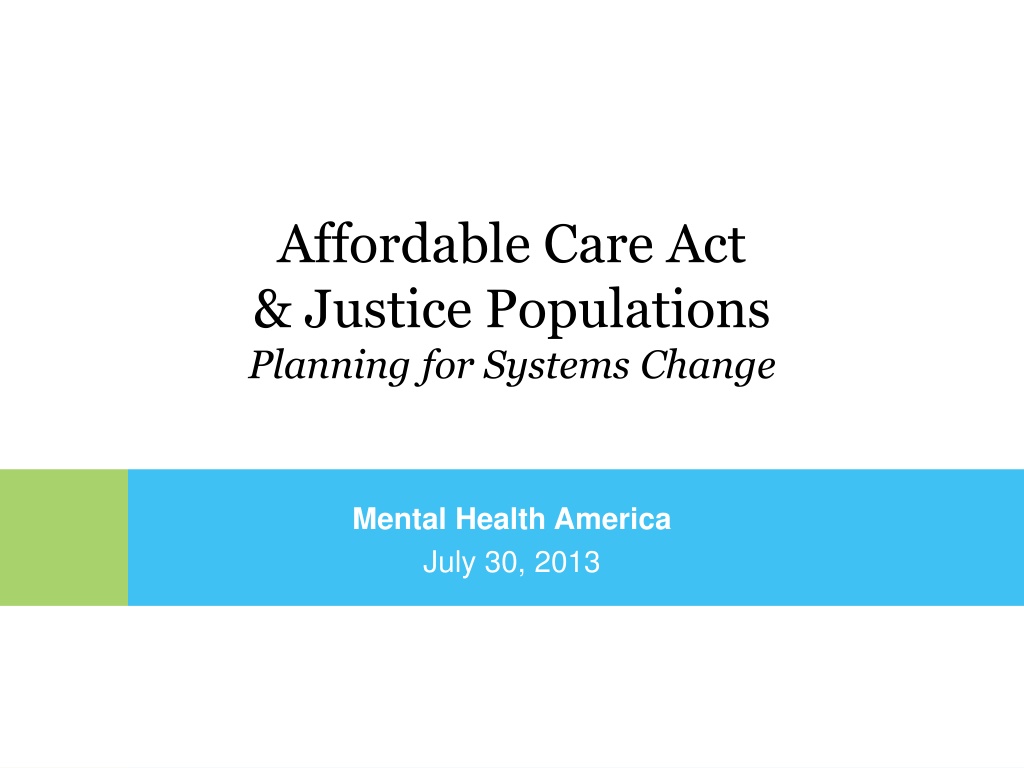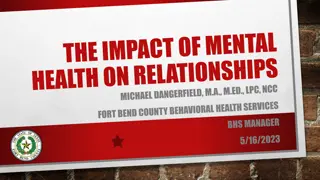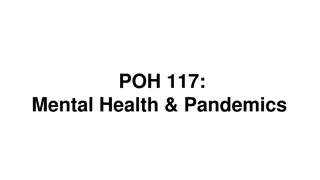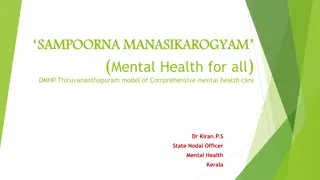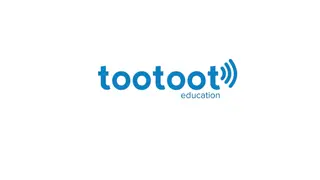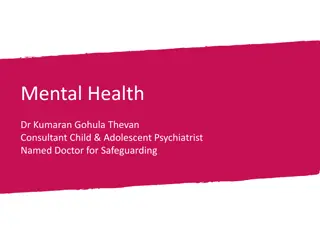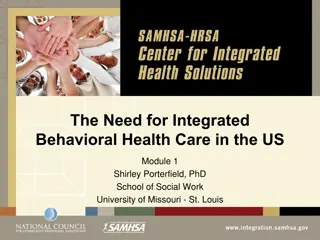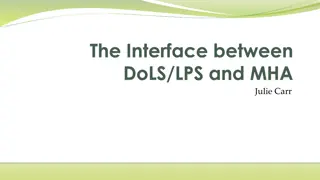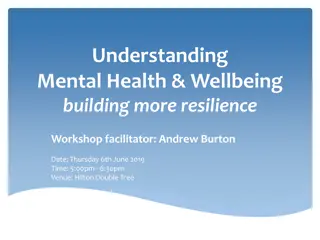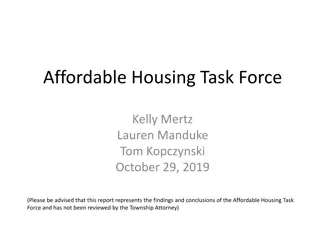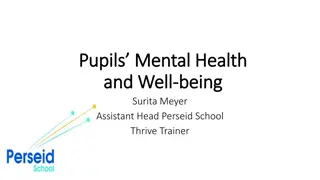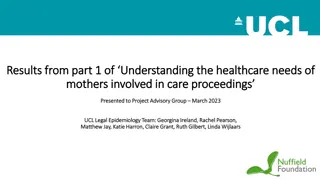Transforming Mental Health Systems Through Affordable Care Act and Justice Population Collaboration
Addressing the gap in mental health services for justice-involved populations by leveraging the Affordable Care Act, this initiative focuses on expanding coverage, reducing waiting lists, and filling service gaps. With Medicaid expansion and premium subsidies, there is an opportunity to reach individuals under justice supervision and improve mental health outcomes for those with untreated conditions, ultimately reducing costs across county systems.
Download Presentation

Please find below an Image/Link to download the presentation.
The content on the website is provided AS IS for your information and personal use only. It may not be sold, licensed, or shared on other websites without obtaining consent from the author. Download presentation by click this link. If you encounter any issues during the download, it is possible that the publisher has removed the file from their server.
E N D
Presentation Transcript
Affordable Care Act & Justice Populations Planning for Systems Change Mental Health America July 30, 2013
Foundation: Collaboration Decades of partnership and building programs Unfortunately, there are thousands more we don t reach Major barrier to expansion has been limited community resources That barrier will likely be removed in the next 9-12 months Unprecedented opportunity to reach nearly all people under justice supervision
Where will the resources come from? The Affordable Care Act: January 1, 2014 Expands Medicaid coverage to people making less than $14,400/year (single person) Create health insurance with premium subsidies for people making up to $43,300 (single person) Enrollment opens October 1 Medicaid Expansion legislation pending
The Promise... Significant change on a broad scale Near-universal coverage for low income adults Reduce waiting lists Fill gaps in services End categorical and grant-based approach to funding 9 in 10 COVERED 1 in 10 COVERED
Assessing the Service Gap Justice-involved, but community-based Jail releasees (bond / pretrial) Probationers / Specialty Courts Parolees Prevalence statistics identify need What services exist? Mental health, substance abuse, etc. What s missing?
Service Gap 17th Circuit Over 15,500 justice-involved in the community 2,300 with Serious Mental Illness 10,800 with Substance Abuse
Impact of Untreated Mental Illness Across County Systems Much higher rates of serious mental illness in CJS 16% of men 30% of women Highest cost within the Jail Frequent fliers in the jail Accumulate lengthy arrest and corrections histories Highest cost in Medical System Frequent ER visits and inpatient stays Most costly diagnoses by far Source: Steadman & Osher, 2009; CHCS 2010
Substance Use Disorders Nearly Universal in Justice System Criminal justice populations include people who are addicted to drugs and/or alcohol As well as people who abuse and misuse these substances More than 70% of jail inmates test positive for drugs 47.9% of state prison inmates and 43.7% of local jail inmates met criteria for substance dependence This is over 7 times greater than in the general population Sources: CASA, "Behind Bars II", February 2010; DOJ ADAM Report, Adams, Olson & Adams, 2002
Increased Coverage Reduces Crime Washington State moved funds from corrections to substance use treatment 10 years ago: 17-33% reduction in arrests among those who went to treatment % Arrested (any crime) # Arrested (Felonies) 60 2000 1500 40 1000 20 500 0 0 Yr before Tx Yr after Tx Yr before Tx Yr after Tx
What Will It Take? Create access at each point along the justice continuum Law Bond Court Charges Pretrial Sentencing Supervision Enforcement Align agency resources to facilitate participation: Universal Medicaid enrollment in all settings Universal screening / linkage to needed services in all settings Expanded community capacity to provide substance abuse, mental health and medical treatment
Strategy 1. Create on-ramps for enrollment from each CJS setting Jail Probation / TASC Specialty Courts 2. Create big wins that use the new services to build public safety, improve health and reduce costs
17th Circuit ACA Planning Process Steering Committee to set direction, priorities Identification of high-impact points of implementation Overall implementation timeline Hosted by Chief Judge Ensured continued momentum Working groups with agency operational leadership Translate policy to day-to-day operations
17th Circuit ACA Planning Process Full continuum of partners / stakeholders Court Pretrial / Probation Jail / Jail Health Provider Public Defender / State s Attorney County Leadership County Information Infrastructure Behavioral / medical health providers Local policy / practice consortiums Health plan managers (as they emerge)
17th Circuit ACA Planning Process Identify opportunities for enrollment Large numbers of people Logistically feasible Minimally disruptive Predictable clinical profile Capacity for continuity of care Ownership by stakeholder Don t worry about reaching everyone immediately Build for greatest impact first Develop culture of wellness in CJ system and community
17th Circuit ACA Planning Process First meeting in May, already identified high impact points and started to plan for enrollment: Jail classification Probation / TASC supervision Probation orientation Probation community resource center
Contact Information Bridget Kiely, BA, CADC, CCJAP Administrator TASC, Inc. (Treatment Alternatives for Safe Communities) 401 W. State Street, Suite 700 Rockford, IL 61101 815-965-1106 x10228 Fax: 1-312-274-6114 bkiely@tasc-il.org www.tasc.org 16
